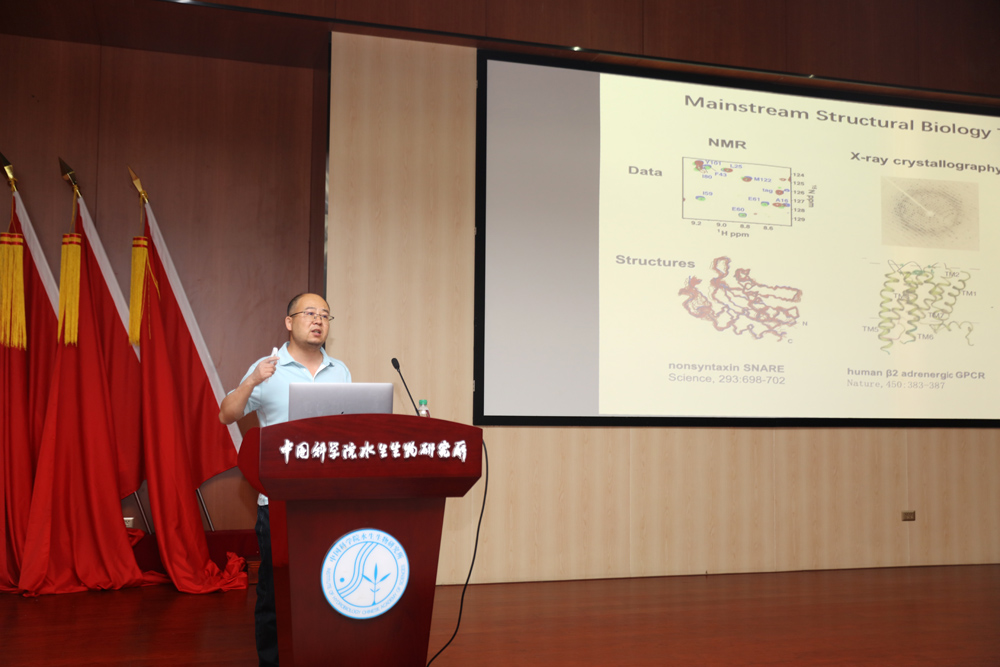
Newsroom
Professor Zhang Kai from Yale University Visits IHB

Professor Zhang Kai from Yale University visited IHB on August 29, 2024. (Credit: IHB)
On the morning of August 29, Professor Zhang Kai from Yale University was invited to the Institute of Hydrobiology (IHB) of the Chinese Academy of Sciences, to engage in academic exchange. He delivered an innovative lecture titled "High-resolution in situ structures of mammalian respiratory supercomplexes," as part of the IHB's 2024 Innovation Lecture Series, marking the 19th session of the series.
Mitochondria, known as the powerhouses of eukaryotic cells, produce ATP, the energy molecule essential for life, through respiration. Respiratory chain complexes play a crucial role in this process. Cryo-electron microscopy (Cryo-EM), a revolutionary molecular imaging technology, has greatly advanced structural biology in the past decade. However, while Cryo-EM is widely used to study respiratory chain complexes, current in vitro imaging methods face limitations in understanding their structures and dynamic processes in their natural environment. Traditional techniques mainly focus on purified biochemical samples, requiring strict control over protein states and purity, often leading to the loss of the mitochondria's native membrane environment, which hampers further research.
Professor Zhang’s team has overcome these constraints by advancing beyond the traditional Cryo-EM approach, eliminating the need for "protein purification." They achieved ultra-high-resolution imaging of mitochondria from heart tissue at the organelle level, without compromising the native environment. This breakthrough provides new insights into studying the in situ and dynamic structures of complex biological systems, opening up novel directions for structural biology.
Professor Zhang Kai earned his Bachelor's degree in Biotechnology from Harbin Institute of Technology in 2008 and his PhD in Biophysics from the Institute of Biophysics, Chinese Academy of Sciences, in 2013. From 2014 to 2018, he conducted postdoctoral research at the MRC Laboratory of Molecular Biology in Cambridge. In 2019, he established his own lab in the Department of Molecular Biophysics and Biochemistry (MB&B) at Yale University. To date, he has published over 50 papers in leading journals such as Nature, Science, Cell, PNAS, Nature Structural & Molecular Biology, and Nature Communications. His current research focuses on understanding the mechanisms of cellular dynamics, movement, and energy production and distribution.